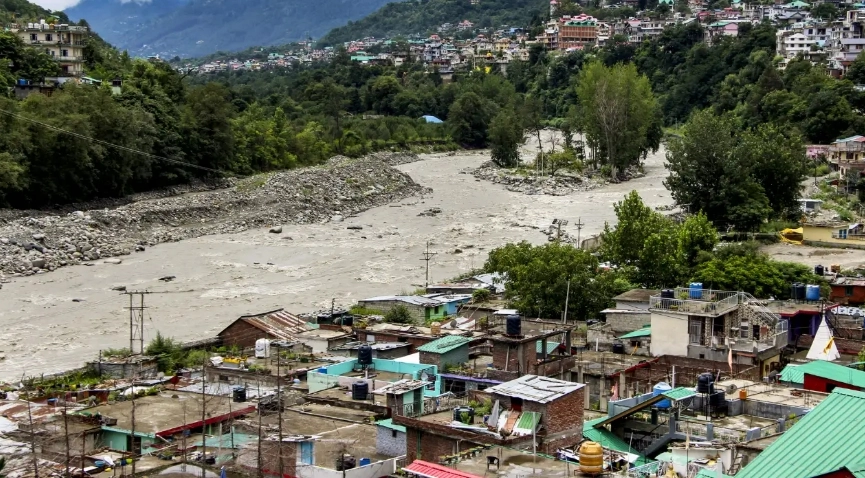
Himachal Pradesh Weather: Severe flooding was reported along the Beas River in Himachal Pradesh’s Mandi district on Wednesday following intense overnight rainfall, prompting the Indian Meteorological Department (IMD) to issue a red alert. As anxious residents watched river levels rise and emergency services moved into action, state authorities assured the public that all major dams remain stable and within safe operational limits.
A total of 406 roads are closed in the state following rains, out of which 248 are in Mandi district alone, where 994 transformers have also been disrupted, according to the state emergency operation centre (SEOC).
In an official release issued at 7:00 am, the Himachal Pradesh State Disaster Management Authority (HPSDMA) confirmed that there is no immediate threat from any reservoir overflow across the state. Despite the deluge, the latest status report highlights that the current pond levels of all dams are well within permissible limits.
Here’s How the Major Dams Are Holding Up:
The data includes real-time inflow and outflow levels across Himachal’s critical river basins — Satluj, Beas, Ravi, and Yamuna — where dam activity is being closely monitored.- Karcham Dam (Satluj basin) received an inflow of 869.17 cumecs, with a spillway outflow of 410.21 cumecs and machine discharge of 477.99 cumecs.
- Nathpa Dam registered an inflow of 915 cumec, and released 512.26 cumecs through spillways.
- Kol Dam, currently at a pond level of 637.59 metres (against a Full Reservoir Level of 642 m), handled an inflow of 1,231 cumecs, discharging 734 cumecs via machine flow.
- Pandoh Dam (Beas basin) saw an inflow of 826.59 cumecs, with a combined spillway and machine outflow of 673.5 cumecs.
- Larji Barrage recorded an inflow of 734.14 cumecs, releasing 457 cumecs through spillways and 234.13 cumecs through turbines.
Shutdowns and Safety Measures
While the reservoir levels remain in check, a few temporary shutdowns were initiated due to increased silt content. The Baira Hydro Electric Project (HEP) was shut down at 7:00 am owing to high silt levels. Similarly, the Sainj Barrage and Parbati-II plants continue to remain non-operational under similar conditions.Meanwhile, the Malana-II HEP has remained shut since 1 August 2024, following last year’s flash floods. The dam gates remain open as a precautionary measure, allowing water to pass through freely in case of sudden inflow spikes.
Monitoring and Reassurance
A spokesperson from HPSDMA stressed that there is no cause for alarm as of now and said that continuous monitoring and timely water releases are in place to prevent downstream flooding. "We are regulating flows carefully and taking all necessary measures to avoid emergencies. The public should remain calm but alert," the official added.Despite widespread flash floods, cloudbursts, and landslides in parts of Mandi and nearby districts, dam safety protocols have held strong, largely thanks to swift coordination and timely management of water discharge systems.
The situation remains under close surveillance, and authorities are prepared to coordinate preventive evacuations or flow diversions if the rainfall continues or intensifies over the coming days.
-
Von der Leyen faces no-confidence vote in European Parliament

-
The rise of private wealth hubs: Is Dubai really the 'Geneva of the Gulf'?

-
Ex-Royal Navy chief sacked as Ministry of Defence issues statement

-
A-list star seen at Wimbledon with wife after secret lovechild in affair scandal

-
Elizabeth Warren calls for bribery probe into Trump-Paramount settlement
